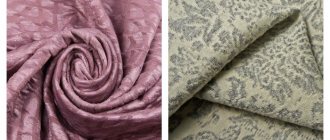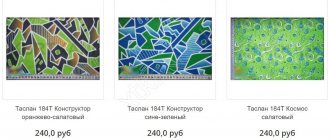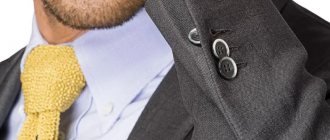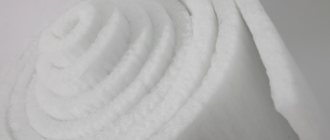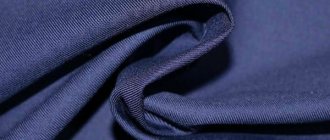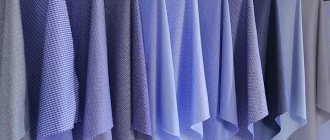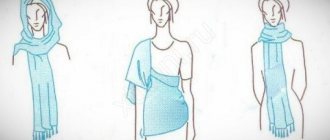Basic requirements for materials for awnings
Awning fabric is a canvas that is used as a canopy, partitions or protective layer in various industries, in transport and in everyday life. To be functional, canopy materials must have the following qualities:
- strength. As a rule, awnings are constantly exposed to numerous mechanical loads, so it is very important that the fabric effectively withstands them;
- resistance to atmospheric conditions. Sheds in most cases are located in the open air, so it is necessary that neither rain, nor wind, nor sun rays cause damage to them;
- resistance to temperature changes. Such materials should not lose their functionality both in the summer heat and in the winter frosts;
- dimensional stability. Over time, the fabric should not stretch or sag;
- waterproof. And on cars, and on warehouse sites, and in summer cafes, awning fabrics must provide reliable protection from moisture;
- lightness and elasticity. These qualities are very important when installing canopies and other tent structures, which should be extremely simple and not require the use of special tools;
- resistance to chemicals. At industrial and construction sites, gasoline, solvents, paints and other liquids can get on the awning canvas. The material should not only not deteriorate, but also be easy to clean using simple means;
- opacity. In many cases, awnings are required to limit the access of ultraviolet rays to objects;
- reduced wear. As a rule, all canopies are made for more than one season, so it is very important that the fabric retains its appearance for a long time;
- safety. Tent canopies should not emit substances harmful to the human body and cause diseases;
- ease of care. Priority is given to materials that do not collect dust and dirt. In addition, it is important that cleaning and washing them does not take much time;
- safety. Working in conditions of high humidity, awning fabrics cannot succumb to rot and mold, which destroys them. Therefore, all canvases must undergo appropriate processing.
It is desirable that, when stored, the materials for making canopies can be easily rolled up or put into trunks and do not take up much space. An important factor is the cost of awning fabrics, which should be affordable for all categories of consumers.
Characteristics of tent fabrics
Tent awning materials have the following properties:
- Weather resistant. The structures are located outdoors; wind, rain, snow, and sun rays should not damage them.
- Stability when changing temperature. The canvas should perform functions equally in cold winters and hot summers.
- The fabric should hold its shape for a long time. Over time, it should not sag or stretch.
- Strength so as not to be damaged by mechanical stress.
- Repels water - sudden rain will not interfere with a pleasant stay under the canopy.
- Elasticity and lightness to quickly set up a tent without the use of additional devices.
- Resistant to chemicals. When dirty, cleaning will be quick, since washing such materials is inconvenient and impractical.
- Wear resistance, because such structures are not made for one or two seasons. Let them last for at least a few years.
- Safe raw materials for production. The awning should not emit harmful substances that penetrate the body.
- Easy maintenance using inexpensive, readily available cleaning products that does not take much time. There are materials that do not accumulate dirt and dust.
- Preservation of the awning for a long time. It should not rot, so impregnation with a special agent is necessary. This is especially true for natural materials - they are more susceptible to this process than others.
Depending on the purpose of the canvas, certain qualities of the material lose or increase their importance. Read also about the water-repellent finish of the fabric.
Application of awning fabrics
Awning materials can be used not only outdoors, but also inside buildings. The areas of their application can be very different, namely:
- Awnings for trucks and trailers.
- Covers for motorcycles and scooters.
- Registration of entry and exit from the car wash.
- Canopies for car parks and parking lots.
- Awnings for yachts and boats.
- Sheltering agricultural products: grain, vegetables, etc.
- Creation of exhibition or trade pavilions, tents and gazebos.
- Advertising banners, posters and banners.
- Canopies over pools to protect from debris and leaves.
- Curtains separating different rooms in industrial facilities.
- In construction, to protect materials and equipment stored outdoors.
- To provide welding, installation and other work at various facilities during the cold season.
- Tent canopies on the summer areas of cafes and restaurants.
- Awnings, mats and tents for tourists.
- Containers for various waste.
The protective qualities of awning canvases were appreciated by the owners of dachas and country houses. They cover hay and straw with such fabric from the weather, install roofs and canopies over recreation areas, summer kitchens and other structures.
Reinforced PVC
This material has a multilayer structure, which is based on a durable cord (synthetic polyester fabric) coated on both sides with polyvinyl chloride. Thanks to this, it is considered ideal for the manufacture of boats, awnings and other critical products.
The multilayer structure of reinforced PVC fabric consists of:
- Top layer PVC;
- Adhesive layer (responsible for adhesion of polyvinyl chloride to the base);
- Cord (base);
- Second layer of adhesive;
- Bottom layer of PVC.
Structure of reinforced polyvinyl chloride
Fabric reinforced with PVC is characterized by increased resistance to friction and mechanical damage, water resistance and resistance to temperature changes. This makes it more durable and in demand in the production of a variety of high-quality products (boats, sporting goods, awnings, etc.).
When choosing a material, its density is mainly taken into account, since the strength of the product made from fabric will depend on this. You can even evaluate the quality of the material by touch; for this purpose, almost every product is equipped with a piece of PVC fabric (this patch is provided, for example, for repairing boats).
You may be interested in this. Detailed description of banner fabric: use of vinyl fabric
Note! Reinforced PVC is used in the most critical structures and demanding products. This is due to the fact that this coating is very strong, wear-resistant and durable.
Tent manufacturing technology
In order to make an awning, use a rectangular (less often square or round) piece of fabric. Its edges are folded several times and reinforced with a special polymer cord, and then carefully welded. Holes are punched on all sides into which metal rings are inserted - eyelets. In the future, a cord will be passed through them, with the help of which the awning will be secured to a metal or wooden frame. The more often the eyelets are located, the less likely it is that microcracks and other damage will appear on the fabric.
The awning must be carefully tensioned, since under the influence of the wind it can “play”, which will lead to premature wear. On average, canopies made from natural materials last 3-4 years, and those made from synthetic materials last about 10 years.
Main characteristics
- density - from 200 to 1500 g/m²;
- strength up to 4000 N/5cm;
- the weave of threads in the base of the material can have different ratios (the most common options: 6×6; 7×7; 8×8; 9×9; 12×12).
- tensile strength - from 700 to 850 kg/m;
- temperature range - from +75 to −30˚С (frost-resistant fabrics up to −50-60˚С).
- service life - up to 15 years.
You might be interested in Features of creating a camouflage camouflage net: choosing fabric for it
When choosing a dense material, it is necessary to take into account all its properties, because the quality of the product or structure made from it will depend on this. At the same time, it is not rational to buy a canvas with high characteristics, for example, for a regular canopy.
Types of awning materials
There are many textile materials that, to one degree or another, can be classified as awning materials. Let's look at the fabrics that are most widespread.
Tarpaulin
This is a highly durable material made from thick linen or cotton fibers through a simple plain weave. Sometimes jute yarn is introduced into the fabric to give greater strength.
Tarpaulin can be either ordinary or with special impregnations - water-repellent or fire-resistant. They create a film on the surface of the fabric, which also prevents mold and rotting.
Waterproof tarpaulin is used by tourists, hunting and fishing enthusiasts. It is used to cover various materials on construction sites or in open storage areas. This fabric is most often dyed straw yellow or khaki green.
Until recently, fire-resistant tarpaulin was used to make protective clothing for firefighters and hot shop workers. It is usually orange in color. Recently, they have been trying to make such clothes from more modern materials.
It is important to know! The minimum permissible time during which the tarpaulin should not ignite is 30 seconds. Thicker and denser fabrics are kept for 1-2 minutes.
Tarpaulin is produced with a density from 350 to 900 g/m2. All types of material are characterized by the following properties:
- high mechanical strength;
- wear resistance;
- breathability;
- durability;
- low cost.
Since not synthetic, but completely natural raw materials are used for the production of tarpaulin, it is a safe material. This is important when using canvas to cover agricultural products - grain, vegetables and fruits, as well as when transporting food products.
The disadvantages of tarpaulin include its heavy weight when wet. Therefore, it is not recommended to wash it. For minor stains, you can wash the stains in water using detergents and a brush.
PVC materials
This is a two- or three-layer fabric for an awning made of synthetic fibers of nylon, lavsan or nylon with a polyvinyl chloride coating and special polymer plasticizers. It varies in density and manufacturing method.
The number of threads per square centimeter is used to characterize PVC awning fabrics. Most often this is 8x8, 10x10 or 12x12. The fibers are connected to each other at an angle of 900, reminiscent of basket weaving. There are two main ways to make such canvases:
- Using casting. The molten PVC film is injected into the material. This method is considered more expensive, but very reliable, since it completely eliminates delamination of the material during operation, even under significant mechanical loads.
- Lamination. A thin layer of film is applied to the prepared canvas, which is reliably fused to it using special presses. Due to its simplicity, this method has become more widespread.
In some cases, if protection from ultraviolet rays is required, the fabric is varnished on both sides. This also prevents dirt from sticking to the awning and makes its surface more attractive.
Particularly popular are canvases made of polyvinyl chloride with acrylic impregnation. They are resistant to ultraviolet radiation and do not accumulate static electricity. Such fabrics do not shrink or fade, and do not emit toxins harmful to humans.
Polyvinyl chloride materials for the manufacture of canopies are used quite widely, since they have undeniable advantages. The most basic ones are the following:
- high tensile strength;
- water repellent and waterproof;
- resistance to aggressive substances;
- no burnout or deformation;
- low wear.
It is important to know! PVC awnings are easy to repair. All cuts or tears are repaired by soldering. At the same time, the structure does not lose its strength and maintains a presentable appearance.
Awnings and other products made from polyvinyl chloride materials are easy to maintain. They can be cleaned with a regular brush or washed with water from a hose. Designs and logos of various companies can easily be applied to such fabrics, which, if necessary, can be removed with solvent or turpentine.
For use in conditions of particularly low temperatures, awning fabric is produced with insulation, which is often used as isolon. This material can easily withstand frosts down to -500C without losing its strength and elasticity.
Oxford
A characteristic feature of this fabric is a special weave of threads, as a result of which the fabric resembles a matting . For the production of awnings, nylon or polyester fibers are used as raw materials.
Particularly fine fabrics are suitable for sewing sports and tourist clothing. Shoes, bags and backpacks are made from denser ones. The most durable ones are used to make canopies, tents and awnings.
Most often, Oxford is available in black, grey, green and khaki. Some canvases may have brighter colors - blue, orange and red. The fabric is pre-treated with water-repellent agents, which makes it completely waterproof. In addition, it has the following properties:
- resistance to dirt;
- wind protection;
- thermality from -50 to +1000С;
- durability;
- ease of care;
- low cost.
It is important to know! Small items made from Oxford fabric can be machine washed at 35-400C. In this case, you should not use substances containing chlorine, since they cause the fibers to become thinner and lose strength.
Tarpaulin
This awning material is considered the most modern. In terms of its qualities, tarpaulin is much superior not only to tarpaulin, but also to PVC fabric. Enterprises in China were the first to produce this fabric, then the technology was mastered in Vietnam and Korea.
The raw material used is ordinary polyethylene, made in the form of long and thin strips. First, they are intertwined very tightly, and then the resulting fabric is laminated on both sides, and the same polyethylene is used for this purpose. It is interesting that tarpaulin is always produced in only two colors - blue and green; only the shades add variety.
The main advantage of this material, which buyers immediately pay attention to, is its fairly low price . In addition, the list of positive qualities includes the following:
- elasticity;
- dimensional stability;
- lightness, especially compared to tarpaulin;
- water and vapor tightness;
- abrasion and tensile strength;
- durability.
It is also important that tarpaulin does not rot or mold even in conditions of high humidity. At the same time, it does not become heavier, since water and other liquids cannot penetrate into the fibers.
It is important to know! Tarpaulin has unique thermoregulation. It does not lose any special properties in the temperature range from -65 to +1500C. Therefore, it can be used in hot shops of metallurgical plants and for constructing sheds in the Far North.
Due to their advantages, all awning materials are used not only to protect people, machinery and equipment from various climatic influences. They decorate city streets with colorful billboards, awnings and pavilions and multi-colored car vans.
Advantageous features of PVC fabric
The main advantages of PVC-coated awning fabric:
- Tensile strength.
- Use in the temperature range from -40 to +70 degrees.
- Resistance to adverse external factors: wind and snow loads, UV rays, high humidity. A structure with such a coating will withstand squally winds, rain, and heavy snowfall.
- Immunity to chemicals. The fabric is not only not afraid of reagents, but also protects the metal frame joints from them.
- Immunity to corrosion and rotting.
- Service life – at least 15 years.
- Waterproof. Welding awning fabric with hot air guarantees the absence of visible seams and complete tightness.
- Environmentally friendly, safe for health.
- Maintainability. The gap can be easily repaired by soldering; if necessary, the awning can be painted.
- Form stability. Even after several seasons, the fabric will not stretch or sag. Does not fade or shrink.
When using awning material, you can reduce the risk of fire; PVC does not support combustion and belongs to the group of self-extinguishing materials. Fabric colors can be different, so the design of a sales tent, hangars, or sports facility is possible in the customer’s corporate style. If a business owner is interested in saving on electricity, he can choose transparent white fabric. In such a hangar during the day it will be almost as light as outside. However, if the client wishes, it is possible to produce awning fabric in almost any color from the RAL table, for example, blue, red or yellow.
Caring for the awning cover is simple, just keep it clean. The material does not absorb dust and dirt. An additional plus is that the fabric can be bent or twisted even at sub-zero temperatures, cracks do not appear on it.


